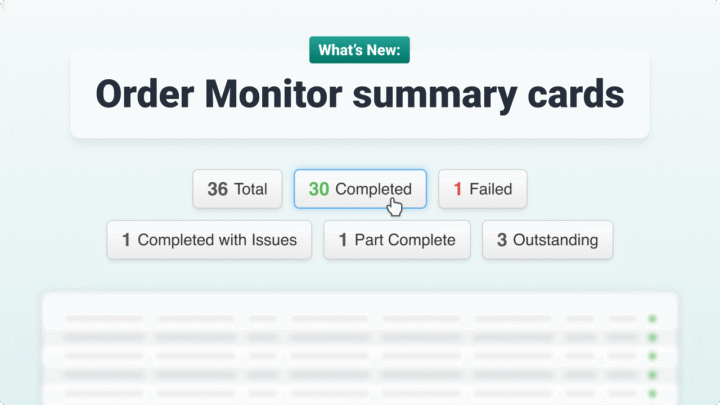Transport managers juggle multiple responsibilities on a daily basis.
Streamlining and optimising their logistics operation, keeping costs in check, ensuring everything stays compliant, to name but a few.
Implementing a Transport Management System (TMS) can be a real game-changer. A TMS can offer major improvements in many areas of responsibility, including:
- Delivery route planning
- Allocating vehicles and drivers to specific routes
- Ensuring fleet compliance
- Tracking and monitoring operations on the day of delivery
- Ensuring Proof of Delivery is recorded
- Keeping other internal teams – and customers – updated on progress
- Analytics and reporting.
But, getting the green light for the investment into a TMS system can often require building a solid business case.
Where do you start?
This guide is here to help transport managers (and anyone else involved in building that business case) to do just that with the areas to consider and the questions to ask.
Structuring your business case
There are, of course, many ways you can structure your business case.
However, it is essential that you present the information in a clear and compelling way so that the people reading it can quickly and easily understand the benefits of investment in a TMS.
We’ve put together a suggested structure for your business case. Feel free to edit the structure (and any suggested content) as you see fit.
Executive summary
Briefly outline the current challenges and the proposed solution (your chosen TMS) and the key benefits (quantified where possible).
Introduction
Provide background on your business, your current logistics operation and the objectives of the business case (investment in a TMS is your ultimate aim!).
Where are you now?
Detail the “as-is” state, highlighting your current pain points and inefficiencies.
Your proposed solution
Introduce your selected TMS and explain the key features relevant to your specific operation.
We suggest you document the steps you took to choose your TMS system. This includes any demonstrations and trials you did. You might also want to add details about other systems you’ve looked at and why you decided against them.
Documenting expected benefits
This is the core of your business case. We’ll provide some more guidance on each of the areas below that you may want to cover:
Cost savings: clearly quantify the potential savings for your chosen TMS. Fuel, mileage, administrative costs and maintenance should be included. We’d recommend including realistic estimates and calculations based on the data you’ve gathered during the evaluation process.
Operational Improvements: describe the qualitative improvements in areas such as route planning, visibility, real-time tracking, communication and reporting. Where possible, you could also link these to potential indirect cost savings, efficiency gains or places where you might be able to generate extra revenue (e.g. increased delivery capacity, new services, diversification, etc.).
Operational efficiencies: explain how the TMS system will streamline your existing processes, reduce errors and improve customer service.
Safety and compliance: if applicable, detail how the TMS will help you meet and exceed safety regulations and compliance requirements, potentially reducing risks and liabilities.
High-level implementation plan: outline the implementation process and the support you will need internally and what your TMS vendor will provide.
We would recommend you detail where existing policies and procedures may change once your TMS system is in place. If the implementation process also includes integration with other systems, this is the section to include further detail.
Return on Investment (ROI): calculate the projected ROI based on the estimated cost savings and the investment in your TMS. We’d recommend including a payback period calculation.
Conclusion: summarise the key benefits and reiterate the reasons you’ve selected the TMS.
Now we’ve provided a high-level summary of the sections and content you may want to include in your business case, let’s have a look at each of them in a little more detail.
Understanding your current logistics operation (where are we now?)
Before you start showing the (many) benefits of implementing a TMS System, we would recommend considering your current operation. You could, for instance, look at the following areas and describe how each element is carried out just to ‘set the scene’.
Current route planning & dispatch process
- How are delivery routes currently planned?
- Are you manually planning your delivery routes?
- Do you use any software in the process (Excel, basic route planning software, etc.)?
- How are your drivers dispatched?
- How do you provide drivers with their daily manifest? Are they paper-based for instance.
- How do you communicate with your drivers when they’re ‘out for delivery’ with any updates? Are you phoning them up, sending texts / Whatsapp messages for instance.
- How are delivery schedules managed and communicated to customers? Do you send emails to customers with their delivery slots and / or send information by text message? Is this a manual or automated process?
- Are there any challenges or bottlenecks in the planning and dispatch process that you face on a regular basis?
How do manage your fleet compliance & drivers
- How are fleet maintenance schedules and compliance tracked? Is it by manual, paper-based logs and / or spreadsheets?
- How are driver’s performance against delivery schedules monitored?
- Are there issues with driver communication?
- How are defects in your fleet recorded and reported to you? Can you track them easily through to them being rectified?
- How are drivers completing their walkaround checks, and can you ensure they are being completed properly?
- Are there any recurring safety and compliance incidents or near misses?
Managing orders
- How are orders received and processed?
- How is proof of delivery (POD) handled? Are they paper-based? Do they require manual entry when they are returned to the depot? Do your drivers have to take photos of the paper POD?
- What are the typical issues with delivery accuracy or delays?
- How are incidents or exceptions to the delivery schedule managed and communicated to customers?
Reporting and analysing your operation
- What data is currently tracked and reported on?
- How is this data used for decision-making?
- What are the key performance indicators (KPIs) they currently monitor (if any)?
Identifying areas for improvement with your TMS System
Once you’ve documented your current logistics it’s now time to look at each of those challenges and map how the features in your chosen TMS System can help you address those specific pain points.
Here are some key areas you may want to consider in order to deliver tangible benefits:
Route planning and optimisation
Calculate potential reductions in mileage by comparing current estimated mileage with optimised routes generated by your chosen TMS system.
You may want to compare a few days worth of historical runs against the runs that your chosen TMS System is calculating. You could also ask about trialling your shortlist of TMS Systems to see how they perform on a day-to-day basis.
Example improvement: “Our chosen TMS System has intelligent route optimisation algorithms that have typically reduced mileage by X% on average. For our fleet of X vehicles, which drive an average of X miles each year, the fuel cost is £Y per mile. This means we can save £X each year.”
Improved vehicle utilisation
Better route planning can lead to fewer empty miles and more efficient use of your fleet. Comparing your current operation results with those from your chosen TMS system can help you understand vehicle use better.
Example: “Optimised route scheduling has improved vehicle utilisation by X%. We believe that our chosen TMS System can potentially help reduce the need for additional vehicles in the future or allow for more deliveries to be completed with the existing fleet.”
Lower administrative costs
Automating the allocation of orders to specific runs; planning delivery routes themselves; dispatching; POD capture; and reporting are amongst the tasks that can help operational teams reduce manual effort and the associated labour costs.
Example improvement: “Automating dispatch and Proof of Delivery processes can help us save approximately X hours per week for our transport team. This translates to an annual saving of £[X * hourly wage * number of transport planners].”
Reduced communication costs
Centralised communication through the TMS can reduce reliance on phone calls and other less efficient methods. Automated notifications to customers about their planned delivery slot and live tracking can significantly reduce the burden on transport and customer service teams in particular.
Should your chosen TMS System also enable internal teams to view specific information on each run this too can reduce the burden on your transport team freeing them up to complete other tasks rather than constantly provide progress updates to customer service.
Lower fleet compliance and maintenance costs
Proactive maintenance scheduling and tracking coupled with walkaround checks and defect reporting can help prevent breakdowns, reduce costly emergency repairs and ensure your fleet is roadworthy and operational.
Example: “Our system’s maintenance scheduling features can help reduce unexpected breakdowns by an estimated X%, leading to savings on repair costs and downtime.”
Operational improvements
The items listed below are by no means exhaustive, but should provide a good starting point. Feel free to add in any other improvements that are specific to your logistics operation.
Enhanced route planning and dispatch efficiency:
- Qualitative benefit: Faster and more efficient route planning, real-time visibility of vehicle locations, and easier communication with drivers.
- Quantitative benefit (indirect): Increased number of deliveries per day/week, reduced planning time, fewer vehicles required.
Real-time visibility and tracking:
- Qualitative benefit: Improved control over the fleet, ability to respond quickly to delays or issues, and better communication with customers about delivery status.
Streamlined Proof of Delivery (POD):
- Qualitative benefit: Faster and more accurate Proof of Delivery collection (electronic POD), reduced paperwork, and quicker invoicing.
Improved communication:
- Qualitative benefit: Clearer and more efficient communication between transport planners, drivers, senior management, and customers.
Better data and reporting:
- Qualitative benefit: Access to comprehensive data on key metrics (e.g., on-time delivery) for better decision-making and identification of areas for further improvement.
Operational efficiencies
- Faster invoice processing: Digital POD and integrated systems can speed up the invoicing cycle, leading to quicker payments.
- Reduced errors: Automation of tasks like dispatch and data entry minimises the risk of human error.
- Improved customer service: Real-time tracking and proactive communication can enhance customer satisfaction.
- Scalability: TMS provides a platform for future growth without a proportional increase in administrative overhead.
- Better incident management: Real-time information and communication tools can help manage incidents more effectively.
And, that’s it.
Building your business case for a new Transport Management System shouldn’t be a headache.
Remember, it’s all about making things easier, safer, and more efficient for you and your business.
And who doesn’t want that?
Whether it’s saving money on fuel, keeping track of deliveries in real time, delivering improved customer service or making sure you’re always on top of your fleet compliance, a TMS can be the answer.
Want more content about Transport Management Systems to help you build your business case?
These articles might be of interest…
Before we even start, we have to ask ourselves: “What is a Transport Management System“
Then let’s understand “what a transport management system costs” as we put together our business case.
We’ve also put together some information on “the best TMS systems for mid-sized businesses“.



